We all know which team has the best power play in the NHL: the Edmonton Oilers, who are converting on a league-best 27.4 per cent of their opportunities. Carolina is second and Washington ranks third but none of these teams have the most productive five-man power-play unit this season.
Power-play success is typically viewed as a team-based stat. However, when evaluating power-play success by the individual units themselves we can glean some interesting insights. Are there certain units that should see more ice-time based on their productivity? What about oft used power-play units that are not producing at a rate in line with the amount of ice they get?
With that in mind, let’s take a look at the five most productive power-play units in the NHL this season. To do so, we will evaluate the 25 most used power-play units and rank them based on goals scored per 20 minutes of ice-time.
[snippet id=5130093]
1. Winnipeg Jets (Pionk, Copp, Dubois, Ehlers, Perreault)
While it might not surprise people to see the Jets at the top of this list, what may surprise people is that it’s their second unit, not the first, that has been the most productive of any five-man unit in the NHL.
In just over 41 minutes of ice-time, the unit of Neal Pionk, Andrew Copp, Pierre-Luc Dubois, Nikolaj Ehlers and Mathieu Perreault has scored an average of 6.26 goals per 20 minutes – best of any in the league that meets our minimum time-on-ice requirement.
A majority of goals from this unit have come off the stick of Ehlers and Copp, who each have five goals with this particular unit on the ice. Ehlers is one of the most dynamic forwards in the NHL and the Jets look to get him the puck with space as often as possible on his strong side of the ice. Pionk often looks to pull defenders towards the middle of the ice before feeding the puck to Ehlers on the left side, who can then attack the net.

Copp has proven to be an effective net-front player who has also shown he can move the puck effectively and score from the bumper position in the middle of the ice.
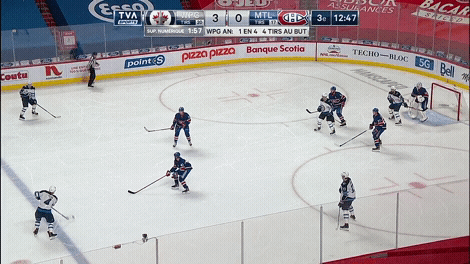
The Jets’ second unit has accounted for 13 goals this season, which is only one shy of Winnipeg’s star-studded top unit of Josh Morrissey, Paul Stastny, Blake Wheeler, Mark Scheifele and Kyle Connor. That group has averaged 2.54 goals per 20 which is less than half the rate of the more-productive second unit.
2. Carolina Hurricanes (Hamilton, Aho, Staal, Svechnikov, Trocheck)
There is a strong argument to be made that this has been the best power-play unit in the NHL this season when you consider total goals scored as well as their per-20 production. The Hurricanes top power-play unit has scored a league-best 23 goals and sit second in goals per 20 at 4.51
What makes this power play so deadly is it can attack from so many different spots in the ice. Hamilton has one of the best shots of any defenceman in the league. Andrei Svechnikov and Sebastian Aho, who set up on the left and right boards, respectively, are highly skilled, creative offensive players. Jordan Staal is a big, rangy forward who has been highly productive in a net-front role and Vincent Trocheck has been equally as productive around the net.

Staal, Aho and Trocheck are all tied for the team lead with seven power-play goals. This unit is unpredictable, and it makes it very difficult to defend.
3. Minnesota Wild (Spurgeon, Bonino, Fiala, Kaprizov, Rask)
This unit was put together in early April and they have been one of the most explosive in the league since.
Kirill Kaprizov has scored five of the unit’s 10 power-play goals. Kaprizov is constantly in motion in the offensive zone and uses his dynamic skating ability and shot to threaten opposing penalty kills at all times.
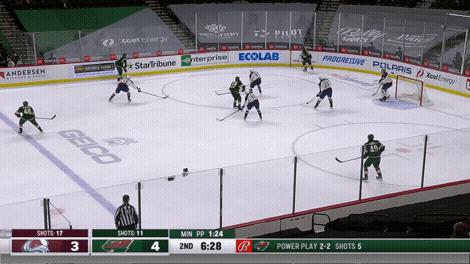
Nick Bonino has been an effective presence around the net and Kevin Fiala can control the flow of the power play from the left side of the ice. Just how much has putting this unit together benefitted the Wild? From January through March, the Wild had the worst power play in the NHL with a success rate of 9.5 per cent. Since April 1, Minnesota has the best power play in the league at 34.6 per cent. The Wild are also 14-3-3 since April 1.
More ammunition for Dean Evason’s case to be named coach of the year.
4. New York Rangers (Fox, Kreider, Panarin, Strome, Zibanejad)
The Rangers’ top unit ranked second only to Carolina’s in total goals with 21. This unit has just about every component a coach could ask for in assembling a top power-play group.
Adam Fox is one of the most intelligent defencemen in the game, rarely making a poor decision with the puck. Artemi Panarin and Mika Zibanejad are superstars who read off each other incredibly well. Kreider is a presence in front of the net who is difficult to move and when you have Panarin and Zibanejad able to feed you from either side of the ice, it’s pretty much picking your poison as a penalty-kill unit.
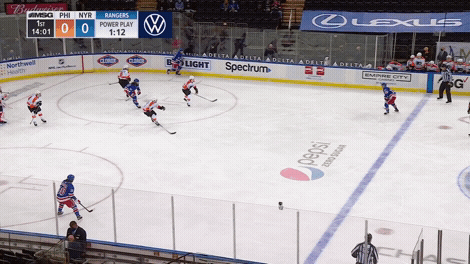
Chris Kreider’s 11 power-play goals led the Rangers and rank 4th in the NHL. Oh, and Ryan Strome also chipped in 18 power-play points, which ranked second on the Rangers. This will be a top unit in the league for years to come.
5. Colorado Avalanche (Makar, Donskoi, Landeskog, MacKinnon, Rantanen)
While this has been Colorado’s second-most used unit, it has also been their most productive one. The unit that has seen the most ice with 76:18 of power-play time is nearly identical but features Nazem Kadri instead of Joonas Donskoi. However, the unit with Donskoi has been more productive, averaging 3.78 goals per 20 compared to 3.14 per 20 with Kadri.
Donskoi and Kadri both play in the middle of the ice on the power play, also known as the bumper position. The fact the unit with Donskoi has been more productive this season isn’t all that significant when you consider that 30 of Colorado’s 46 power-play goals this season have come from the other four guys on the power play. Donskoi has one power-play goal with this unit and four overall this season.
The Avs have an embarrassment of riches on the power play with Cale Makar facilitating the puck from the point. The sophomore has a terrific shot that penalty killers have to respect. His elite skating ability also opens space for him to feed one-timers to Nathan MacKinnon on the left and Mikko Rantanen on the right. If Makar shoots, he has one of the best net-front players in the league in Gabriel Landeskog to deflect pucks and clean up rebounds.
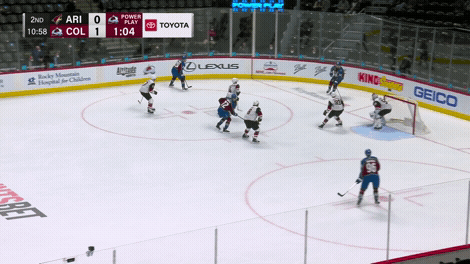
Like the Hurricanes’ top unit, the Avs’ has deadly options everywhere you look.
As for the power-play unit with the lowest production rate among the 25 most used in the NHL, it’s the most-used unit in Boston. The group of Matt Grzelcyk, Patrice Bergeron, David Pastrnak, Brad Marchand and Nick Ritchie has played 51:11 together and managed just for goals for a per-20 rate of 1.56.
Boston’s second-most used unit, which features the same forwards but Charlie McAvoy instead of Grzelcyk on the back end, has the dubious distinction of being the power play with the most minutes (22:58) to not score a single goal this season.
And yet, the Bruins still have a power play that ranks ninth in the league. How is this possible? Well, the Bruins have used six different units for over 10 minutes each this season. The unit of McAvoy, Bergeron, Ritchie, Krejci and Marchand has an absurd five goals in 6:05 of ice-time for a per-20 rate of 16.41, which is the highest of any power-play unit regardless of time on ice.
Injuries and the trade deadline additions of Taylor Hall and Mike Reilly, who have both seen power-play time, have left the Bruins without one particular unit with a large amount of ice time for the season.
[relatedlinks]

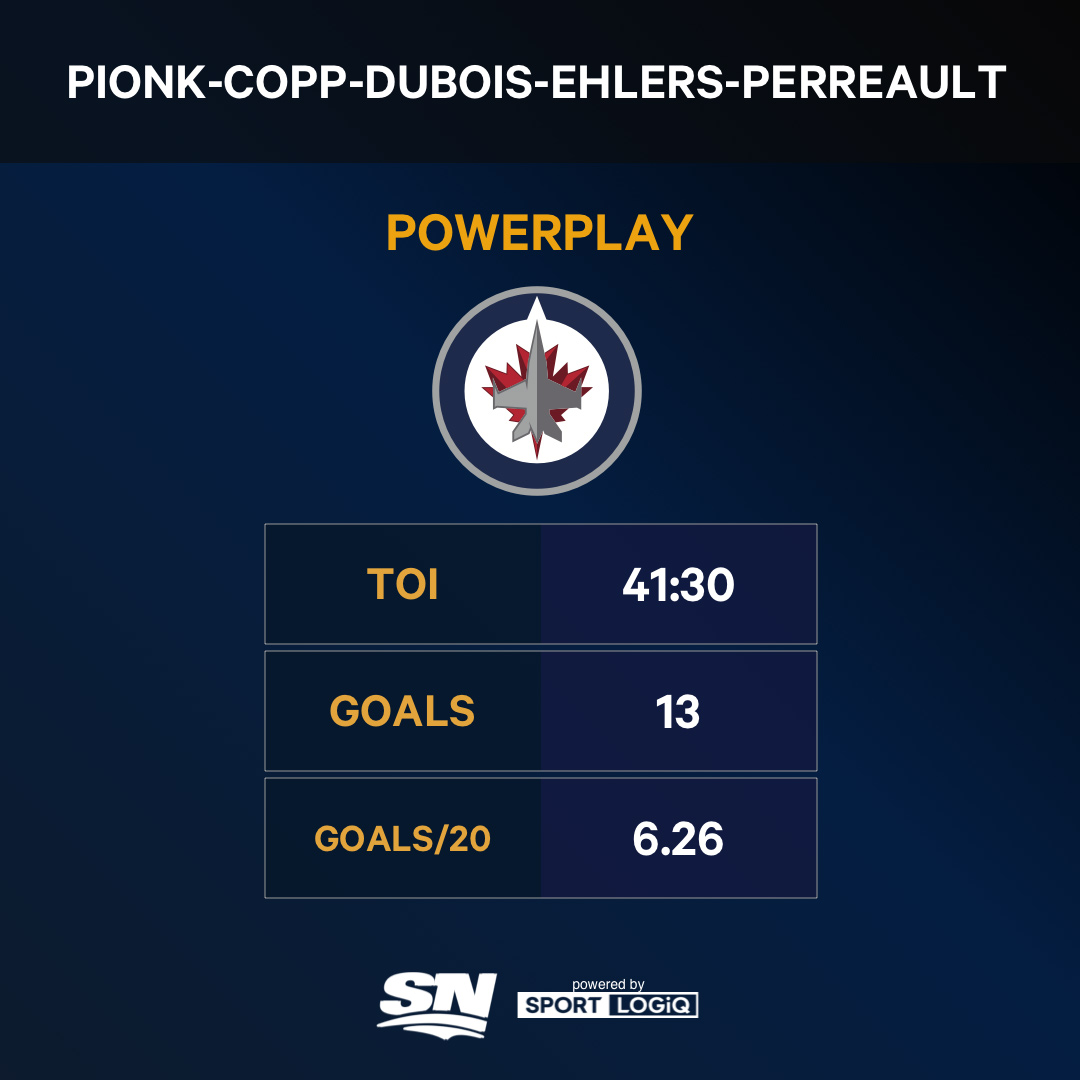


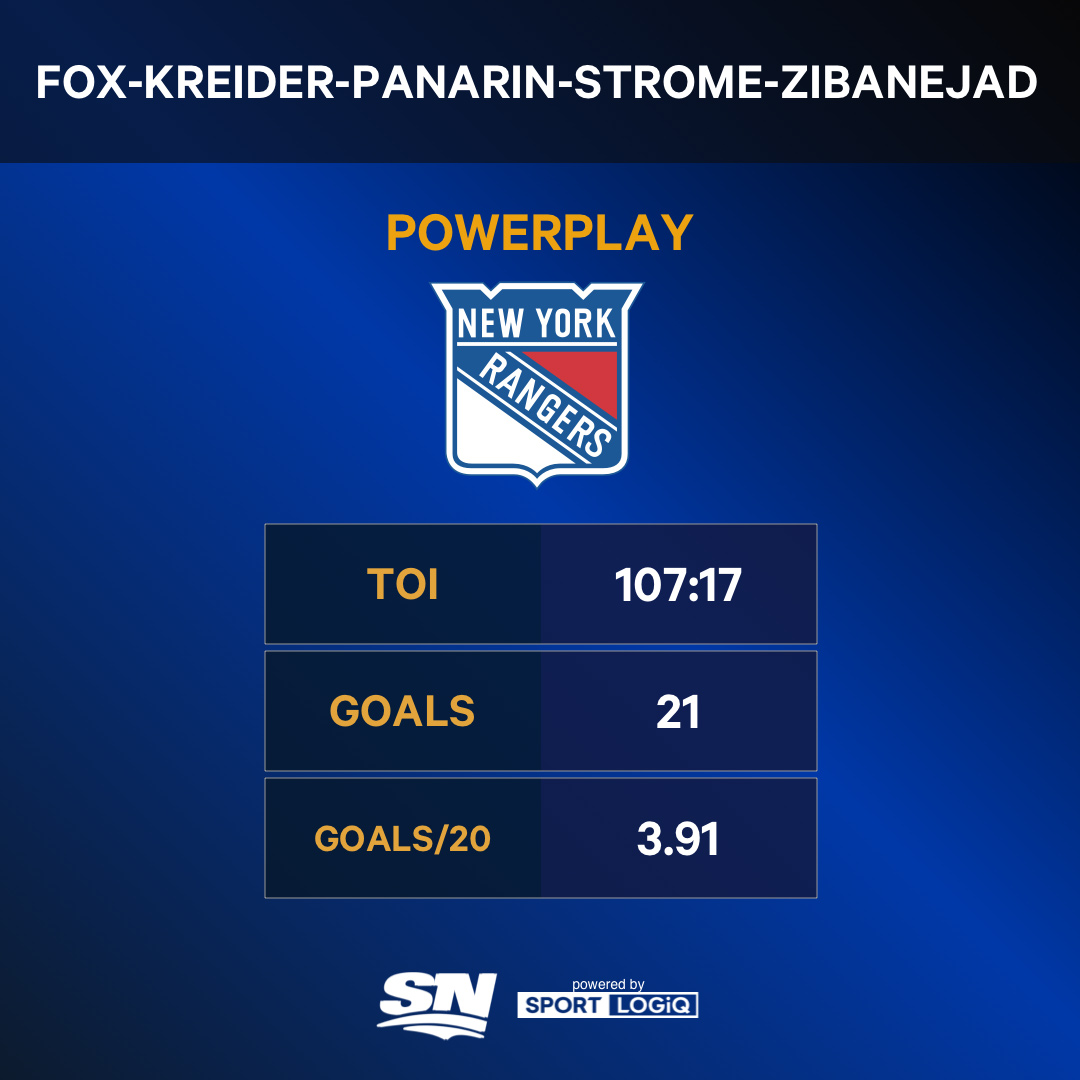


 2:53
2:53

 1:38
1:38
COMMENTS
When submitting content, please abide by our submission guidelines, and avoid posting profanity, personal attacks or harassment. Should you violate our submissions guidelines, we reserve the right to remove your comments and block your account. Sportsnet reserves the right to close a story’s comment section at any time.